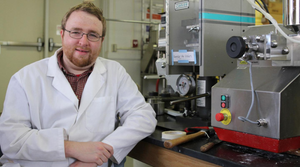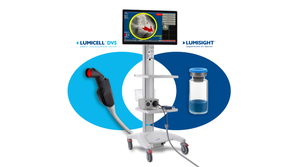The medtech industry should abandon its last-century, manual approach to updating device history and follow the space industry’s ascent into cutting-edge solutions.
December 11, 2019
History was made in October 2019 as NASA astronauts Jessica Meir and Christina Koch exited the International Space Station (ISS) and performed the first-ever all-female spacewalk to install new batteries for the station’s energy supply. The ISS is a technological marvel that first launched in 1998. The low-orbiting laboratory enables astronauts and scientists from numerous countries to continuously live in space in Earth’s orbit while furthering scientific research on a host of topics.
A more down-to-earth type of technological ingenuity is the modern medical device. Not exactly rocket science, but also not altogether alien from futuristic space stations, medtech is a burgeoning global industry projected to total more than a half trillion dollars in sales revenue by 2020.1 More importantly, the medical device sector delivers much-needed healthcare and medical treatments to billions of people every day.
Medtech devices are regulated worldwide to ensure the efficacy and safety of the indispensable, life-saving services they provide. The ISS is a vastly technical, state-of-the-art space installation, conceived and operated according to intricate plans, blueprints, and corresponding real-time data to ensure the safety of its occupants. Similarly, medical devices are the sum of complex design specifications, production data, inspection and testing documentation, and numerous other important artifacts. All these materials are encapsulated in a device history record (DHR), which is required for compliance with the U.S. FDA's 21 CFR 820, the Quality System Regulation (QSR), and ISO 13485. This makes DHRs equal parts complex and dynamic for device makers.
NASA continues to be a world-leader when it comes to advanced technology research and innovation. In recent years, the agency developed the sensor and imaging technology adapted to the private sector for smartphone cameras, improved laser communication between satellites that’s been repurposed for advanced naval communication, and synthesized an essential fatty acid food additive as part of its life support research that today is included in most baby formulas.2 “NASA is key to the nation’s technology leadership,” states a 2016 technology innovation report by the space agency.
However, where NASA relies on the slickest, most cutting-edge systems and solutions to operate the ISS and other technologies, a substantial number of medical device and diagnostic manufacturers continue to rely on legacy, paper-based data systems to manage their DHRs for regulatory compliance. Medical device companies could learn a lot from a more-space-age approach. The medtech industry’s last-century, manual approach to updating a device’s DHR opens a Pandora’s box of data errors, delays, and noncomformances for device makers. The mistakes and downtime, in turn, erase any speed and efficiency gained during production, and the end result is longer product-to-market timelines.
In the highly competitive world of medtech manufacturing, every minute wasted equates to lost revenue. There has to be better way for device manufacturers to avoid long review times, costly quality control, lost production time, and scrapped lots of product. This article reviews some of the most common pain points manufacturers using manual DHR processes experience and some practical solutions to overcome them.
Preparing for Launch Sequence
In the late 1950s and early 1960s, when the space race between the U.S. and the Soviet Union reached its zenith, much of the technology needed to put a satellite, chimpanzee, or man in space was rudimentary and limited. Both countries’ space programs depended largely upon the knowledge and experience of German rocket scientists who laid the groundwork for the science in the '30s and wartime Europe. In stark contrast, medical device manufacturers have at their disposal a plethora of the 21st-century technology and automated solutions for expedited, efficient manufacturing. However, numerous medtech companies choose to cling to their legacy manual methods; this puts them at a distinct disadvantage from competitors that adopt digitization.
The DHR is one of the processes where significant numbers of medtech manufacturers still employ disconnected, error-prone legacy systems. These companies continue their reliance on manual, employee-entered data in a DHR such as filling out and reviewing records and DHR audits. Paper-based DHR processes present a disconnected, sluggish approach that can pose serious problems when various production systems are unable to communicate with one another. The net effect is poor data introduced through human error into a highly complex DHR, which can be hundreds or thousands of pages.
Mistakes common in DHRs include scribal errors, missing values, and illegal values that require a time-consuming and costly manual quality event process that stalls production or necessitates longer review cycles. A ripple effect of poor data leads to stoppages, scrap waste, and more quality control reviews. Most painfully, these mistakes can turn into longer times to market, recalls, and ultimately, revenue losses that medtech companies can ill afford. Even more costly for a company are the working capital expenditures that accrue when a particular lot gets hung up in quarantine due to lengthy review cycles. Because it is so expensive for a medtech firm to ramp up product quantities, delays in production mean a company has to increase the number of lots to keep up with inventory demands. Longer cycle times require much more working capital.
Juxtaposed to paper, a digital DHR system affords a manufacturer a flexible, streamlined solution that automatically authenticates workflows to fully integrate and connect with your existing manufacturing systems, data sources, and processes. An eDHR solution also creates forms that validate in real time and update easily for faster equipment maintenance processes and improved regulatory compliance. A digital approach to DHRs reduces bottlenecks and production errors precisely because of the interconnectivity with other shop floor enterprise systems. Fewer errors and delays means less time spent correcting documents, higher right-first-time (RFT) metrics, and less time wasted gathering audit documents. Moreover, a digital DHR solution can help improve the time to shelf and reduce the need for more working capital due to inventory unpredictability. Those freed-up funds, in turn, can be invested back into your device R&D. The efficiencies gained by organizations that embrace digital solutions for their DHR pains can make a metaphorical light-speed difference in propelling them past the competition.
Maintain Your Trajectory
Medtech companies in a global market depend on the ability to collect, aggregate, and analyze DHR data for insights to make on-the-fly production adjustments to keep a competitive edge. This data can give shop floor managers, manufacturing engineers, and quality assurance experts a snapshot of floor production levels to identify bottlenecks and production issues and evaluate test results for quality and compliance. However, it’s difficult to catalog and decipher data if a manufacturer uses a legacy DHR process that hinges on paper-based data processes. That pre-space-age approach to data means slow nonconformance tracking and limited awareness of quality events, which can hamstring a company in terms of downtime, quality control expenditures, and wasted lots.
In contrast, a robust electronic DHR (eDHR) solution enables a company to track and analyze DHR data in real time so that bottlenecks and nonconformances are identified and mitigated before they become larger, more costly production issues. When DHR documents are digitally processed, the data is immediately available to management, line employees, and quality teams. And since the DHR is automated and interconnected, employees can access it virtually anywhere with a tablet or computer to make informed decisions during production.
An eDHR also continues to protect your company long after your devices enter the marketplace. The solution tracks a device throughout its product life cycle so the entirety of its data is readily accessible. In the unlikely event of a recall or change in a manufacturing process, the tool ensures the DHR is accurate and up to date.
Uh, Houston, We’ve Got a Nonconformance
Just as in highly-controlled space flight operations, problems can and do arise in device manufacturing. And similar to aerospace, the faster a nonconformance can be identified, the sooner corrective and preventative action (CAPA) can be triggered to prevent additional nonconformances.
But due to manual and hybrid DHR systems being disconnected and labor intensive, they offer a manufacturer limited shop-floor awareness. A significant amount of time may pass before production staff even realize a quality event has happened. This means precious time is lost as quality engineers shuffle through paperwork to pinpoint issues and activate belated CAPA. And because DHR processes depend on the design master record (DMR) data, which is part of the DHR, it’s critical that even the smallest quality issues be identified and corrected immediately. If not promptly caught and mitigated, minor nonconformances can snowball into more and larger nonconformances such as pricey rework, wasted lots, and recalls.
In contrast, a digital DHR solution paired with an electronic quality management system (QMS) can swiftly detect potential nonconformance trends and activate CAPA so that further nonconformances can be avoided. This equals tremendous time and revenue efficiencies for a device maker. The production speed, accuracy, and efficiency an eDHR tool gives a company represents a game-changing competitive advantage.
In situations where a product recall is necessary, all the information in the eDHR is immediately available from a central, single source of truth (SOT), including details about the manufacturing process, personnel involved, constituent materials, and equipment used for each lot. Instead of poring over unseemly amounts of paper documentation, a company can rapidly pinpoint the problem and identify which lots are affected.
Conclusion
Spaceflight and exploration of the galaxy’s expanses are a risk-inherent, but worthy endeavor. Back on terra firma, state-of-the-art medical devices offer life-changing and often life-saving applications to patients. In order for today’s device makers to survive in a competitive and challenging marketplace, every production advantage must be pursued. On the cusp of 2020, companies simply can’t afford to retain legacy DHR data systems when superior, more efficient tools are right at their fingertips. Thankfully, it doesn’t take a moonshot effort for device makers to make the switch from paper to digital solutions. It simply takes a conscious effort to invest in the future success and prosperity of your medtech company.
References
1. “Medical Devices Market 2010-2002” MarketWatch. Aug. 19, 2019. https://www.marketwatch.com/press-release/medical-devices-market-by-solution-type-by-application-type-by-industry-type-by-brandby-region-and-forecast-2012-2020-2019-08-19
2. “Technology Drives Exploration” National Aeronautics and Space Administration. Aug. 8, 2016. https://www.nasa.gov/sites/default/files/atoms/files/stmd_technology_drives_exploration_508_8_11_2016.pdf
About the Author(s)
You May Also Like


